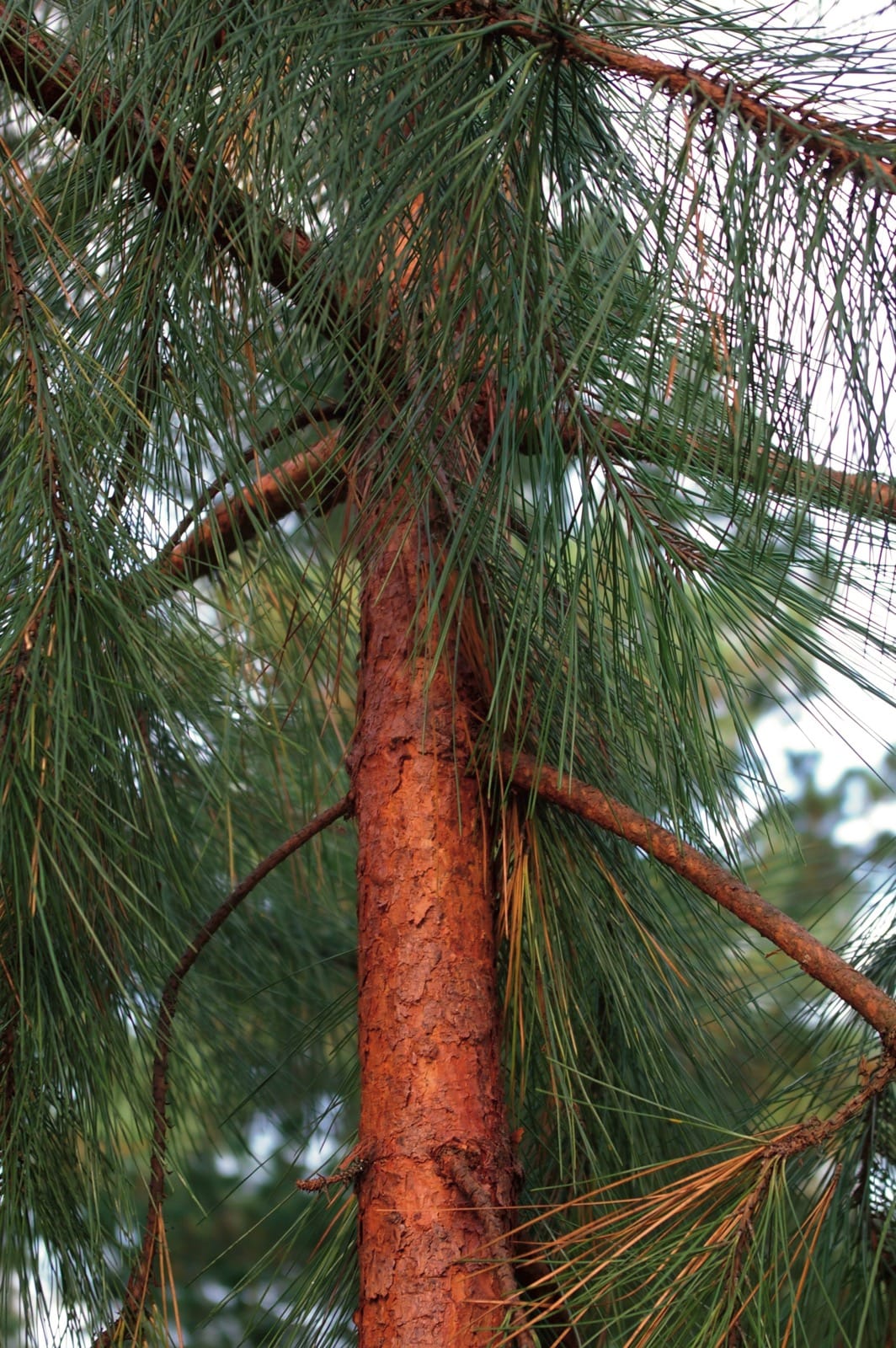Pinus oocarpa
Credits
Article from New Trees by John Grimshaw & Ross Bayton
Recommended citation
'Pinus oocarpa' from the website Trees and Shrubs Online (treesandshrubsonline.
Genus
- Pinus
- Subgen. Pinus, Sect. Trifolius
Common Names
- Egg-cone Pine
Other taxa in genus
- Pinus albicaulis
- Pinus arizonica
- Pinus armandii
- Pinus attenuata
- Pinus ayacahuite
- Pinus balfouriana
- Pinus banksiana
- Pinus bhutanica
- Pinus brutia
- Pinus bungeana
- Pinus canariensis
- Pinus cembra
- Pinus cembroides
- Pinus chiapensis
- Pinus contorta
- Pinus coulteri
- Pinus culminicola
- Pinus densata
- Pinus densiflora
- Pinus devoniana
- Pinus durangensis
- Pinus echinata
- Pinus edulis
- Pinus elliottii
- Pinus engelmannii
- Pinus eremitana
- Pinus flexilis
- Pinus gerardiana
- Pinus greggii
- Pinus × hakkodensis
- Pinus halepensis
- Pinus hartwegii
- Pinus heldreichii
- Pinus henryi
- Pinus × holfordiana
- Pinus hwangshanensis
- Pinus jeffreyi
- Pinus johannis
- Pinus koraiensis
- Pinus lambertiana
- Pinus leiophylla
- Pinus longaeva
- Pinus massoniana
- Pinus maximartinezii
- Pinus monophylla
- Pinus montezumae
- Pinus monticola
- Pinus morrisonicola
- Pinus mugo
- Pinus muricata
- Pinus nelsonii
- Pinus nigra
- Pinus orizabensis
- Pinus palustris
- Pinus parviflora
- Pinus patula
- Pinus peuce
- Pinus pinaster
- Pinus pinceana
- Pinus pinea
- Pinus ponderosa
- Pinus pseudostrobus
- Pinus pumila
- Pinus pungens
- Pinus quadrifolia
- Pinus radiata
- Pinus remota
- Pinus resinosa
- Pinus rigida
- Pinus roxburghii
- Pinus sabiniana
- Pinus serotina
- Pinus sibirica
- Pinus strobiformis
- Pinus strobus
- Pinus sylvestris
- Pinus tabuliformis
- Pinus taeda
- Pinus taiwanensis
- Pinus teocote
- Pinus thunbergii
- Pinus torreyana
- Pinus virginiana
- Pinus wallichiana
- Pinus wangii
- Pinus yunnanensis
Tree to 35 m, trunk erect, straight, 1–1.25 m dbh. Bark thin, scaly, reddish brown; in older trees dark greyish brown, thick, rough, scaly, breaking into small or large plates divided by shallow, longitudinal fissures. Crown open, rounded or irregular. Branchlets rough, scaly, reddish brown; vegetative buds not resinous. Leaves in fascicles of (three to) five, persisting for two to three years, straight, rigid or rarely lax, lustrous yellow-green, triangular in cross-section, (17–)20–25(–30) × 0.08–0.14 cm, apex acute. Fascicle sheaths to 2.5 cm long, reddish brown to black, persistent. Cataphylls 1–1.5 cm long, brown to greyish black. Male strobili pink or reddish then yellowish brown, oblong-cylindrical, 1.5–2 × 0.5–0.6 cm. Female cones subterminal, solitary or in whorls of two to four; peduncles stout, to 3.5 cm long, bracteate, remaining attached to the cone. Cones 3–8(–10) × 3–9(–12) cm, often wider than long, purple to light brown, mature in 12–18 months; mature cones ovoid to subglobose, semi-serotinous. Scales 70–130, opening gradually, thick, woody, oblong; apophysis almost flat or slightly raised, yellowish brown to light brown; umbo dorsal, obtuse or with a minute prickle. Seeds greyish black with black spots; wings effective, 0.8–1.8 × 0.4–0.8 cm, greyish brown. Farjon & Styles 1997, Farjon et al. 1997, Farjon 2005a. Distribution EL SALVADOR; GUATEMALA; HONDURAS; MEXICO: Chiapas, southwest Durango, Guerrero, Hidalgo, Jalisco, México, Michoacán, Morelos, Nayarit, Oaxaca, northern Puebla, Sinaloa, Sonora, Tlaxcala, southern Veracruz, southern Zacatecas; NICARAGUA. Habitat Open woodland or forest, in pure stands or in mixed pine or pine-oak forests. Pinus oocarpa can be found between 200 and 2700 m asl, though conditions are optimal between 1000 and 1500 m. USDA Hardiness Zone 9–10. Conservation status Lower Risk. Illustration Farjon & Styles 1997, Farjon 2005a; NT611. Cross-reference K228.
Pinus oocarpa, whose name relates to its egg-shaped cones, is a handsome species that can form a broad, rounded crown, each branchlet bearing large terminal clusters of needles. It has a wide range in southern Mexico and into adjacent Central American countries, and collectors should attempt to select provenance with some care. Trees from the northwest of its range commonly have only three leaves per fascicle and smaller cones (not over 5.5 cm long), and are distinguished as P. oocarpa var. trifoliata Martínez (syn. P. luzmariae Pérez de la Rosa); coming from a colder and drier climate, they are likely to be hardier and better suited to our area than the type.
A tree of var. oocarpa grown from VERA 84, collected at 2000 m in Veracruz by M. Sparrow and P. Brewster in 1993, is growing vigorously at Kew and was about 5 m tall in 2007, with striking reddish bark. By contrast, a seedling from 100 m in Guatemala, outhoused to Tregrehan by the Royal Botanic Garden Edinburgh, died of cold after only a year. The species has been grown at Berkeley since 1979. Nurseries in both England and the western United States have offered it in recent years.

